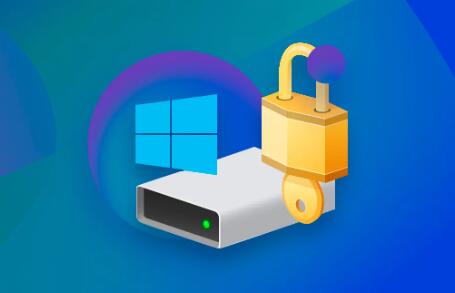A data recovery agent in BitLocker is a specialized feature designed to facilitate the recovery of data from encrypted drives in case the original decryption methods fail or become unavailable. This role becomes crucial in situations where access to encrypted data is needed but the primary credentials or recovery methods are inaccessible.
Here’s an in-depth look at what a data recovery agent is, its role, how it operates within BitLocker, and the broader implications for data security and management.
Understanding BitLocker
BitLocker is a disk encryption program included with Microsoft Windows, starting from Windows Vista onwards. Its primary function is to protect data by encrypting the entire disk drive, ensuring that unauthorized users cannot access the data even if they have physical access to the drive. BitLocker uses the Trusted Platform Module (TPM) to provide secure storage for encryption keys, and it supports various encryption algorithms to protect data.
What is a Data Recovery Agent?
A data recovery agent in BitLocker is a designated account or entity that has the ability to recover data from a BitLocker-encrypted drive if the standard recovery methods fail. This feature is particularly useful in organizational settings where data access and recovery are critical, and it ensures that data remains accessible even in scenarios where individual users are unable to unlock the drive.

Roles and Responsibilities of a Data Recovery Agent
Access Recovery: The primary role of a data recovery agent is to provide access to encrypted data if the original BitLocker keys or recovery passwords are lost or inaccessible. This could happen due to various reasons such as forgotten passwords, hardware failure, or user error.
Emergency Recovery: In emergency situations where an authorized user is unavailable, a data recovery agent can step in to unlock and recover data, minimizing downtime and ensuring business continuity.
Administrative Control: Data recovery agents are often assigned to IT administrators or security personnel within an organization who have the necessary credentials and permissions to manage and recover encrypted drives.
How Data Recovery Agents Operate in BitLocker
Configuration: When setting up BitLocker encryption, administrators can configure one or more data recovery agents. These agents are typically defined by their certificates or keys. The configuration process involves associating the data recovery agent with the BitLocker-encrypted drives.
Backup of Recovery Information: BitLocker allows for the backup of recovery information to Active Directory (AD) or to a secure location specified by the organization. Data recovery agents use this information to unlock drives if needed. The backup includes recovery passwords, recovery keys, and other critical data.
Recovery Process: If a recovery situation arises, the data recovery agent uses the backup information to recover the encryption keys or passwords. This process might involve entering recovery passwords, applying recovery keys, or using other secure methods to access the encrypted data.
Security Measures: Data recovery agents must adhere to strict security protocols to prevent unauthorized access. This includes secure handling of recovery keys and passwords, maintaining robust authentication measures, and ensuring that recovery processes are logged and monitored.
Implications for Data Security and Management
Enhanced Data Protection: The use of data recovery agents enhances the security of BitLocker-encrypted drives by ensuring that data can be recovered even if standard recovery methods are not available. This is crucial for maintaining data integrity and accessibility.
Administrative Efficiency: Data recovery agents streamline the recovery process for IT administrators and security personnel, reducing the time and effort required to access encrypted data in case of emergencies or failures.
Regulatory Compliance: For organizations that must adhere to data protection regulations and standards, the use of data recovery agents helps ensure compliance by providing a reliable method for data recovery without compromising encryption security.
Risk Management: Proper management of data recovery agents mitigates risks associated with data loss or inaccessibility. It ensures that backup and recovery processes are well-defined and secure, minimizing the potential impact of data loss incidents.
Setting Up and Managing Data Recovery Agents
Selection of Recovery Agents: Organizations should carefully select individuals or entities to act as data recovery agents. These individuals should have the necessary expertise and trustworthiness to handle sensitive recovery processes.
Configuration and Documentation: Proper documentation and configuration are essential for effective management of data recovery agents. This includes maintaining records of recovery keys, passwords, and the process for accessing encrypted drives.
Regular Testing and Updates: Regular testing of the data recovery process ensures that recovery agents can successfully access encrypted data when needed. Additionally, updating recovery keys and passwords periodically helps maintain security and effectiveness.
Training and Awareness: Ensuring that data recovery agents are well-trained and aware of the procedures and security protocols is crucial for effective data recovery and management.
A data recovery agent in BitLocker plays a vital role in ensuring that encrypted data remains accessible even in scenarios where standard recovery methods are unavailable. By providing a backup mechanism for data recovery, data recovery agents enhance the security, efficiency, and compliance of data management practices within organizations. Proper setup, management, and training are essential to maximize the effectiveness of data recovery agents and maintain the integrity of encrypted data.
About us and this blog
Panda Assistant is built on the latest data recovery algorithms, ensuring that no file is too damaged, too lost, or too corrupted to be recovered.
Request a free quote
We believe that data recovery shouldn’t be a daunting task. That’s why we’ve designed Panda Assistant to be as easy to use as it is powerful. With a few clicks, you can initiate a scan, preview recoverable files, and restore your data all within a matter of minutes.
Subscribe to our newsletter!
More from our blog
See all postsRecent Posts
- Retrieve deleted videos from sd card 2025-04-25
- How to retrieve damaged sd card? 2025-04-25
- Retrieve photos from sd card 2025-04-25

 Try lt Free
Try lt Free Recovery success rate of up to
Recovery success rate of up to









